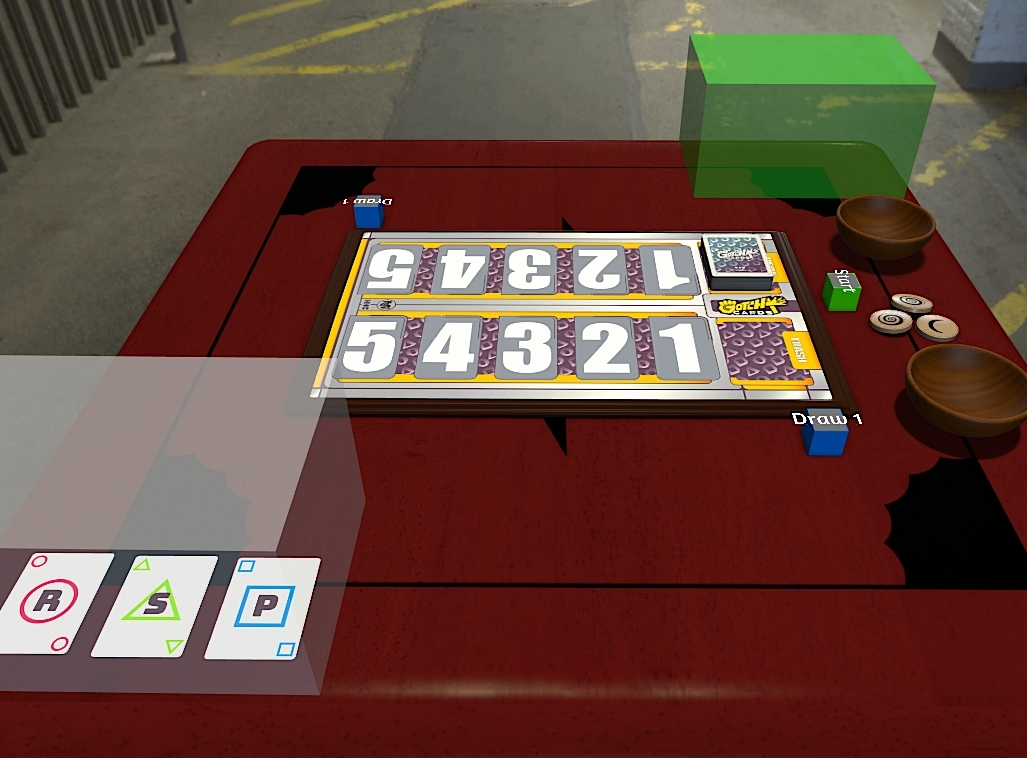How to Play GotchaCards
Summary
GotchaCards is a multi-player game based on the concept of rock-scissors-paper. Each player builds a hand of five cards and uses them to play a three-turn round.
Rock beats Scissors | Scissors beats Paper | Paper beats Rock
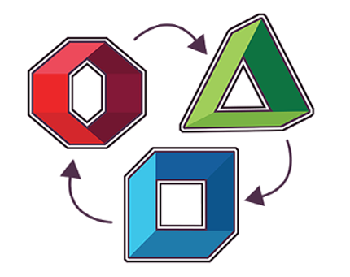
What's on a card?
Here's what a GotchaCards looks like!
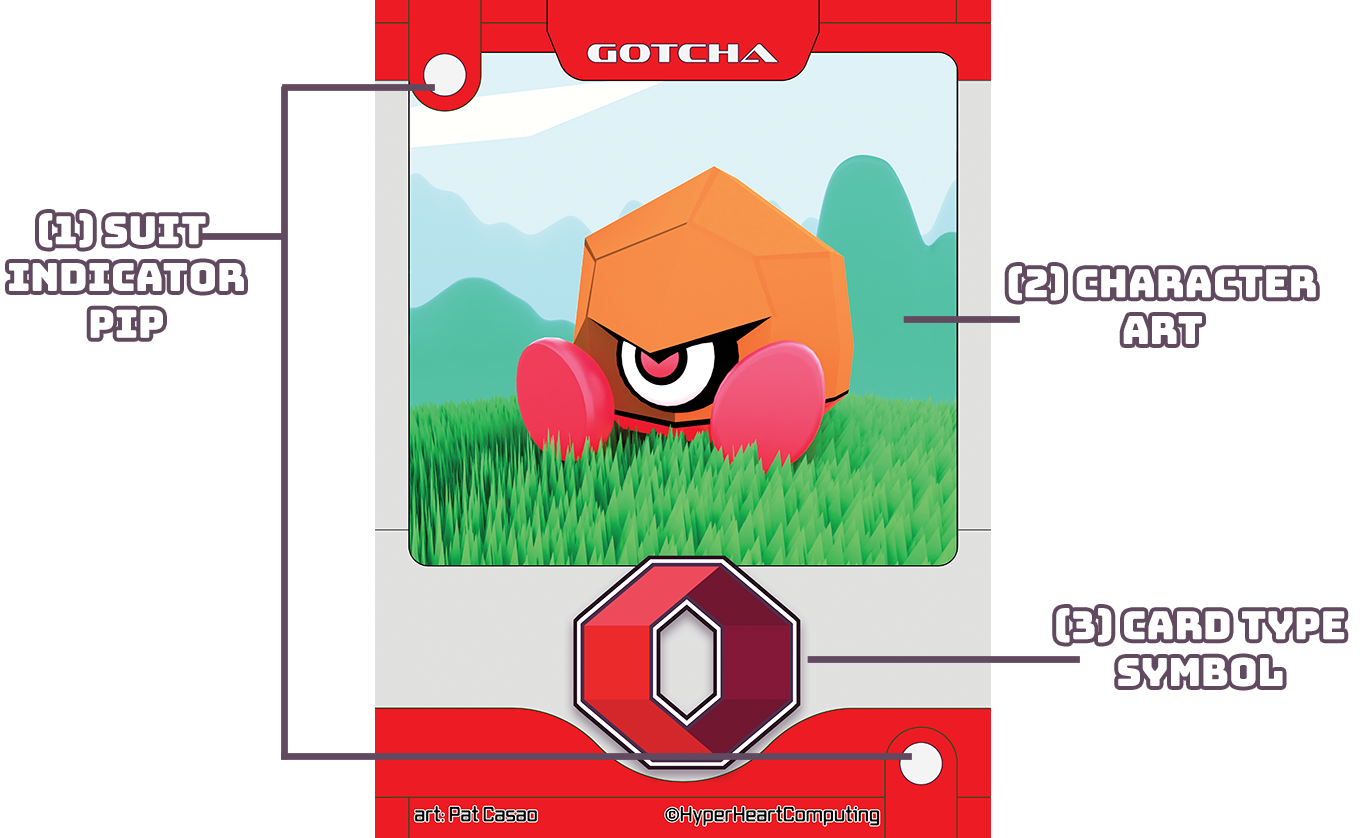
- This pip indicates if a card is a rock (), scissors (), paper (), or item card ().
- Art featuring the character or item is featured in this area.
- This symbol indicates what type of card it is.
For more information on all the card types, check out the Cards Page
Competitive Mode (2 players) Back to Top
Watch our 10-minute [How to Play] video here:
Setting Up
If this is your first time playing, we recommend removing all cards with a black symbol in the bottom right corner.
Once you’re more comfortable with the game, try adding them back in!

Shuffle the cards and place them on your left or right. This is the Deck. Below the deck is the Trash. Cards are placed in the trash face-up after ties, when discarded, or when cleaning up between rounds.

During turns, cards must be played in lanes outwards from the deck. The lane closest to the deck is Lane1, the next one is Lane2, and so on.
Start by deciding turn order. The obvious choice is by deferring to the classic rock-scissors-paper, but you may choose turn order however you like. Once you determine who is Player1 and Player2, Player1 starts by drawing 9 cards from the deck.
Player1 chooses one card to keep and add to their hand, then places the rest of the cards face-up. Player2 chooses a card from the face-up pile, then players alternate choosing cards. Once all of the face-up cards are chosen, Player1 should have five cards and Player2 should have four.
Player2 draws one card from the deck, completing the hand of five cards.
Earning Points
If both players play the same type of card (ex. Rock VS Rock) that results in a tie.
Points are earned by collecting cards that are played in lanes. Each card in your victory pile is worth 1 point.
- If your card defeats your opponent’s card, you take both cards (2 points)
- If your card is played in an empty lane or unopposed, you take 1 card (1 point)
- If both cards are tied, they are placed in the trash (0 points)
Win Conditions
Whoever has the most points at the end of a round wins that round.
The first player to win two rounds wins the game.
Game Flow
Players will then play through three turns. Each player must play at least one card each turn. If a player is unable to play at least one card, or does not already have a card on the field, the other player wins the round automatically.
If both players run out of cards before the start of a turn, the round ends and the player with more points wins the round.
Cards must be played from the deck outwards. This means that a player cannot place a card in Lane2 without placing one in Lane1.
Turn One: Player1 places at least one card face-down, and Player2 responds by placing cards.
Turn Two: Player2 places at least one card face-down, and Player1 responds by placing cards.
Turn Three: Both players must play all their cards face-down
Once both players are done placing cards for the turn, both players flip over their cards and resolve the match-ups in each lane in order. The effects of the player who started the turn have priority:
- On Turn One, Player1’s effects must be resolved first.
- On Turn Two, Player2’s effects must be resolved first.
- On Turn Three, Player1’s effects must be resolved first.
Whoever has the most points at the end of three turns wins that round. If a round results in a tie, you enter Overtime Turns.
Overtime TurnsPlayers begin each Overtime Turn by determining turn order. Whoever becomes Player1 starts by drawing two cards, then Player2 draws two cards. Both players play their cards immediately, then resolve the card match-ups. If one player has more points than the other, that player wins the round.
If an Overtime Turn results in a tie, start another Overtime Turn. For additional Overtime Turns, each player draws one additional card per additional turn. For example, on the second Overtime Turn, both players get three cards. On the third Overtime Turn, both players get four cards, and so on.
Continue Overtime Turns until one player is the clear winner for the round.
Continuing the Game
After a round ends, the player that lost must choose whether to become Player1 or Player2 for the next round. Take all the cards that were played in the previous round and place them into the trash.
Do not shuffle the deck between rounds. At any point in the game, players may look through the trash.
Player1 draws 9 cards from the deck, and play continues.
Let’s Gotcha!!!
Party Mode (2-4 players) Back to Top
Setting Up
Start by deciding turn order. Player 1’s effects must resolve first, then follow clockwise to resolve each other player’s effects. Deal 5 cards out to each player.
Most cards have the same effects in both modes, but the swap cards resolve a little differently in Party Mode.
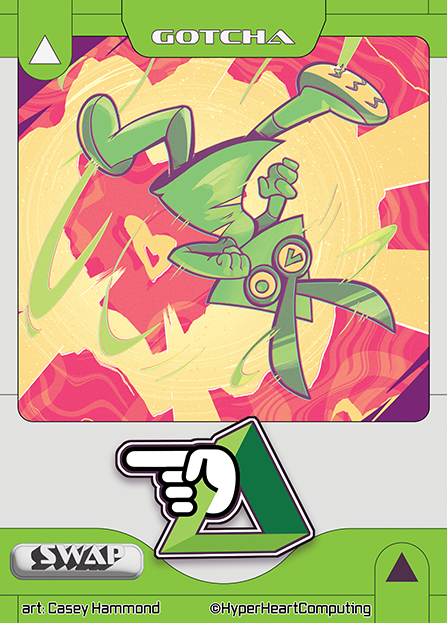
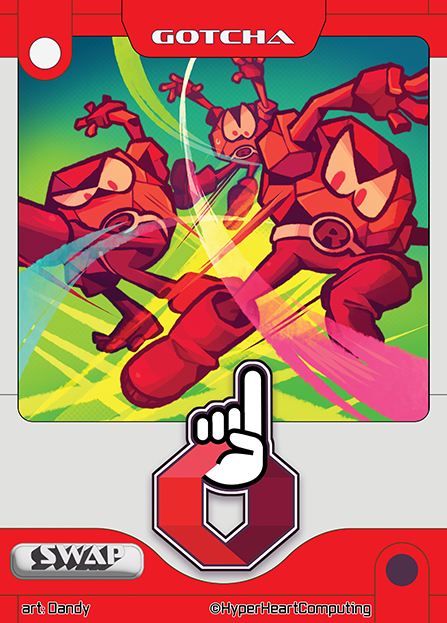
When resolving its player's effect, the ![]() Swap Left and
Swap Left and ![]() Swap Right cards trade places with the player's card to your Left or Right.
Swap Right cards trade places with the player's card to your Left or Right.
When resolving its player's effect, the ![]() Swap Across card lets you choose which player to trade places with.
Swap Across card lets you choose which player to trade places with.
If they swap with a card that hasn't resolved yet, that effect resolves after the cards swap.
Game Flow
For each turn, players place 1 card face down. After all players have placed a card, all players reveal their cards at the same time. The turn may resolve in one of three ways:
1) There is one clear winner. All cards are placed in the winner’s victory pile.
e.g. Rock VS Rock VS Paper, paper takes all the points
2) There is no clear winner or a three-way tie. All cards are placed in the trash.
e.g. Rock VS Paper VS Scissors, all cards are trashed
3) There are multiple winners and one clear loser. The points and losing card effects are shared between the winners, and any remaining cards are placed into the trash.
e.g. Rock VS Paper VS Paper. Since there are 3 victory points to gain and two winners, each paper takes a card into their victory pile and trashes the remaining 1.
Any players that are no longer holding cards are “inactive". At the end of the turn, effect priority passes to the next active clockwise player.
Play continues as long as there are at least two “active” players. If only one player has cards in hand, those cards are placed in that player’s victory pile.
Win Conditions
The player with the most cards in their victory pile is the winner! If there’s a tie, proceed to Overtime.
Overtime Turns
Each player in Overtime draws one card and plays it immediately. Repeat this draw-and-play process until there is a clear winner.
Try it out! Back to Top
Print out the prototype deck!
We've put together a printable prototype sheet! You can just grab this PDF, print out the cards, then cut 'em out!
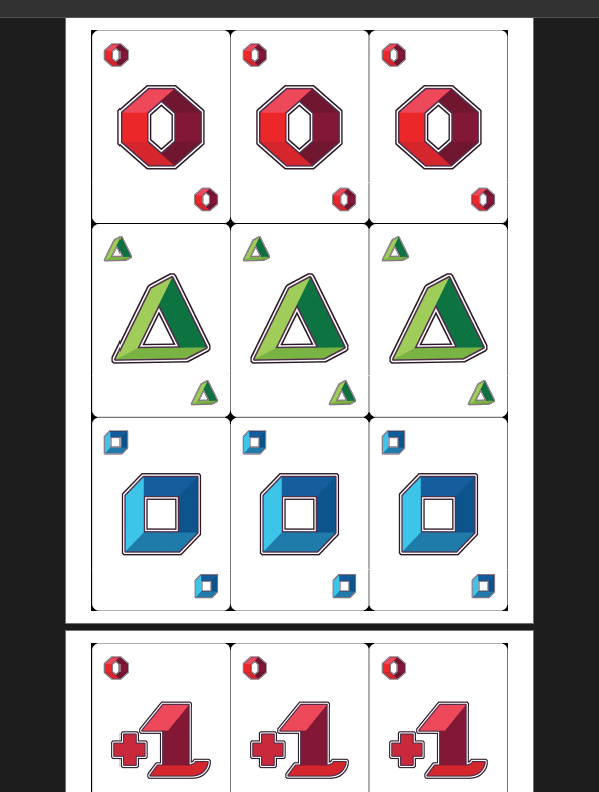
GOTCHACARDS PRINTABLE PDF (11 pages)
GOTCHACARDS PRINTABLE PDF (11 pages) [ARCHIVE.ORG MIRROR]
Available in TableTop Simulator!
If you have TableTop simulator, check out the Workshop page and try it out on there!
